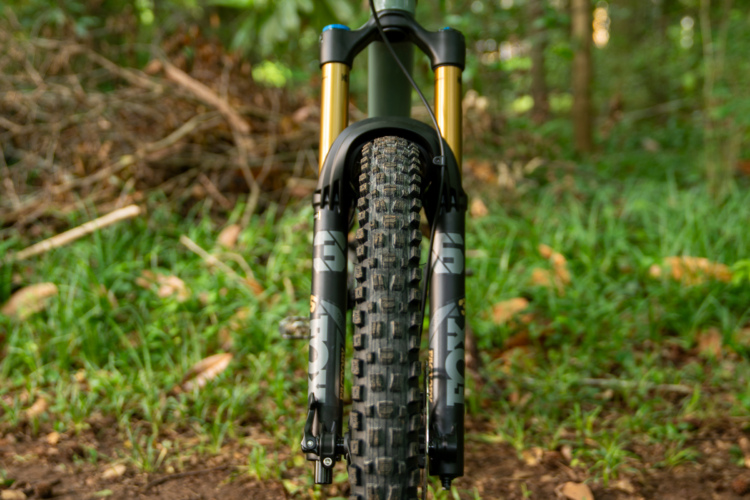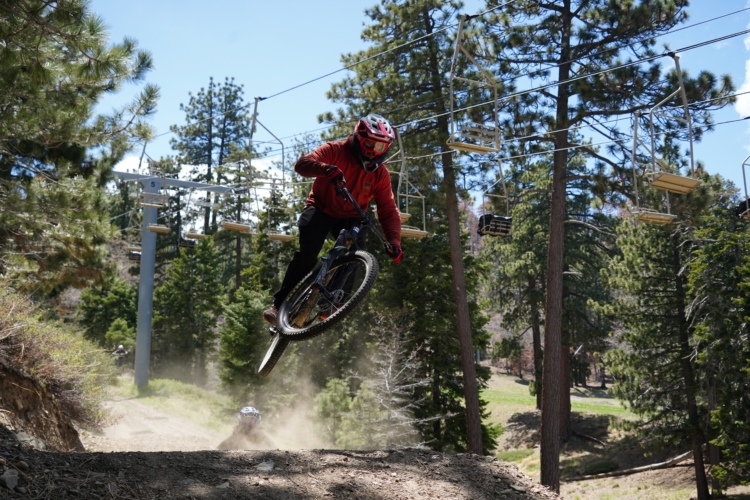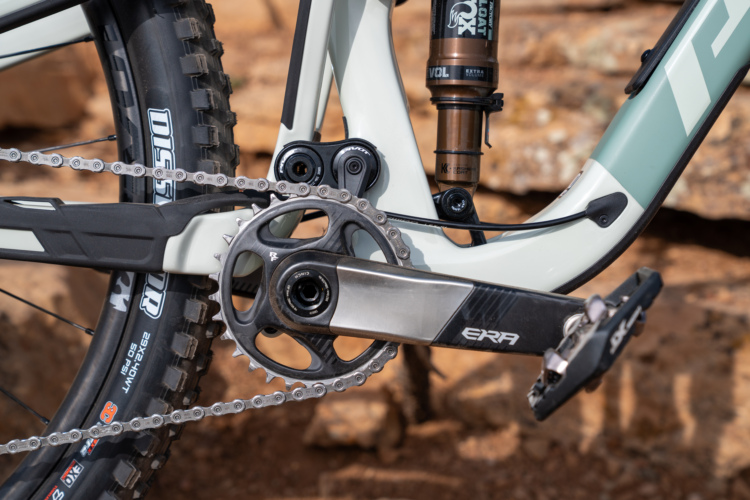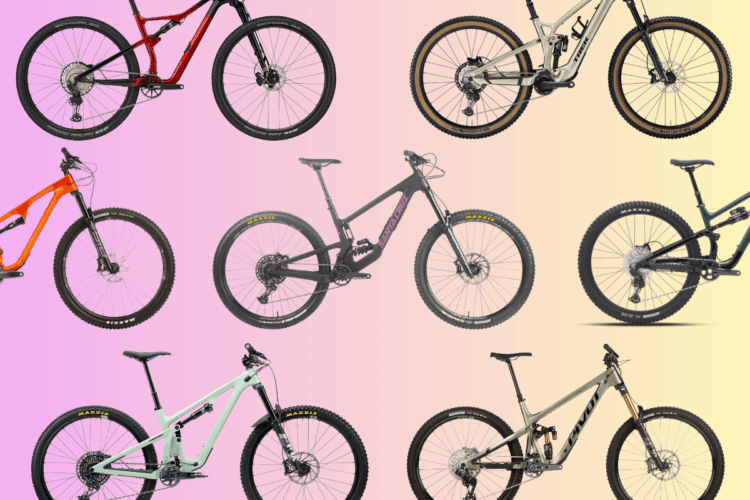Raleigh Bicycles is one of the most venerable names in the cycling world. Over 125 years after it was originally founded, the company still continues to make high-quality bicycles that are sold around the world.
According to an article on BikeBiz.com, Raleigh was recently named to a list of “superbrands” in the UK. This list is generated by a random-sampling poll to compile a list of brand names that are known by the general population… “household names,” if you will. Raleigh is the only bike brand on that list.
Compare Raleigh’s age to other well-known bike brands: Trek was founded in 1976, Specialized was founded in 1974, Giant was founded in 1972, and Raleigh was founded in 1887.
Raleigh brings that storied history of bike building to the current mountain bike models they sell today. While Raleigh doesn’t produce any full suspension mountain bikes, they do manufacture several affordable 26″ hardtail models and several performance 29er hardtails.
Raleigh XXIX+G
Building on their classic history, Raleigh’s XXIX+G hardtail 29er looks like a throwback to the beginnings of mountain biking. From the steel frame to the stamped head badge to the understated graphics, at first glance this looks like the mountain bike that every singletrack luddite has been longing for!
However, this bike hides some new-school componentry in its classic-looking package.
Specs
The XXIX frame is made from 4130 butted chromoly steel with CNC dropouts and replaceable inserts. The headtube is a straight 1 1/8″ and the rear drops are open dropouts that accept a regular QR axle.
The graphics are muted and understated, but the gorgeous, coated steel frame and beautiful welds speak for themselves. The stamped metal head badge is a nice touch, and one that is overlooked on modern mountain bikes far too often in my opinion. While it does add a couple of grams of weight, this gorgeous proclamation of pride in one’s bike speaks volumes for a company that still chooses to manufacture head badges, and the mountain biker who chooses to buy such a bike.
The frame features mounts for two water bottle cages, so you’ll have plenty of hydration for those long rides.
The head tube angle is 71 degrees, rear chainstays are 455 mm long, and, if you’re interested, you can find other geometry and frame measurements, many of which vary based on frame size, in this table on Raleigh’s website.
The Fox F29 CTD 100mm fork takes care of suspension duties and features a 15mm through axle for security and stiffness. The through axle is a great touch, especially on a bike at this price point, and does wonders for solidifying the front end and providing peace of mind when careening through nasty, rutted out ORV trails.
The XXIX is also available as a singlespeed, spec’ed with a Gates Belt Drive, for $1,650. The G in the XXIX+G name, however, indicates that this specific rig comes with gears. The drivetrain on the +G is a mix of Shimano Deore and SLX parts, all coming together to form a 3×10 drivetrain.
I find it a little curious that there are only two stock XXIX choices: either a singlespeed or a thirty-speed. C’mon, can’t we have a little middle ground here? Personally, I think a 3×10 drivetrain is only useful about 3% of the time, especially on a hardtail 29er–give me a 2×10 any day.
While I personally would prefer a 2×10 drivetrain on this bike, so far I have no real complaints about the performance of the 3×10. But stay tuned for more thoughts after I’ve finished my review.
Braking duties are covered by Shimano’s 505 brakes. Only one ride into the test (granted, it was an epic 50 miler) the front brake lost its bite and is now in desperate need of a bleed. I’ll get it bled and report back later on how these brakes perform over the long haul.
Handlebars, stem, seatpost, and seat are all Avenir products. The 640mm handlebars are a little narrow for my tastes, but they aren’t extraordinarily narrow compared to other stock bars on XC bikes. For comparison, the Airborne Goblin also comes with 640mm handlebars. But if this was my ride to keep for a long time, I’d quickly chop the stem in half and throw some wider bars on here.
The whole package rolls on Weinmann XM280 rims, alloy disc hubs, and Geax AKA 29×2.2″ tires. While Geax AKAs aren’t my favorite tires, they’re a respectable choice for an XC bike of this caliber.
Steel frames have great vibration-damping properties but that smooth ride comes at a cost: namely, extra frame weight. The XXIX+G weighs in at 29.6 pounds without pedals (about 30.5 with my heavy SPDs on it). It’s no featherweight out on the trail, and especially after you’ve pedalled it for over 50 miles, you might begin to curse the extra weight you’re dragging around (or maybe that’s just me). Still, the steel frame definitely helps save your ass on a ride that long… quite literally
At an MSRP of $1,900, Raleigh is definitely trying to provide a great value with this bike. While they could have blinged out every component possible, instead they’ve chosen to include a mix of reliable components to create a steel hardtail 29er that is both dependable and affordable.
To find out how dependable the XXIX+G actually is, stay tuned for the final review!
Many thanks to Raleigh for providing the XXIX+G for review.





















12 Comments
Jun 11, 2013
Apr 15, 2013
Apr 16, 2013
Apr 15, 2013
Oh, but the cost!
For fully's there's no point in using a compliant metal as that issue is dealt with by the suspension. So, Ti's only relative advantage comes for hardtails and rigid bikes. Given the dramatic surge of carbon fiber, wth both weight and price coming down in recent years, I can see why Ti has lost its luster in the market.
Apr 16, 2013
Apr 15, 2013
Apr 15, 2013
Apr 15, 2013
As for the 3x10 and rear QR being "old tech," while as you can see from the article I'm not thrilled with those choices, the reality is that there are plenty of 3x10 drive trains being produced, sold, and spec'ed on stock bikes. Also, while I would much rather prefer a thru axle rear, at this price point a rear qr is still pretty standard these days. As for the cockpit, again, this is a bike trying to hit a certain price point, and going with a lesser-known brand (or self-branded parts) is a common way to cut the price down.
Apr 18, 2013
Apr 18, 2013
I haven't ridden a Talus personally, but looking at the geometry specs online it looks like the geometry is pretty much in line with what most companies are doing for hardtail 29ers.
Apr 15, 2013
The weight does seem high but I guess ditching the gears would help a bit. Swap out the fork for a rigid and now we're talking!
Apr 15, 2013